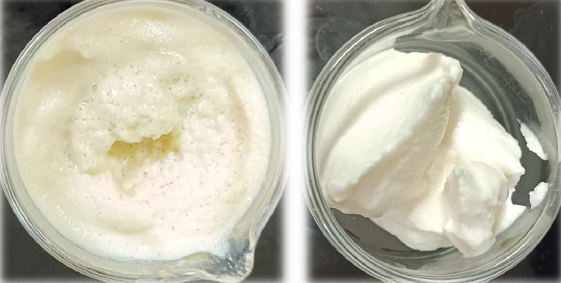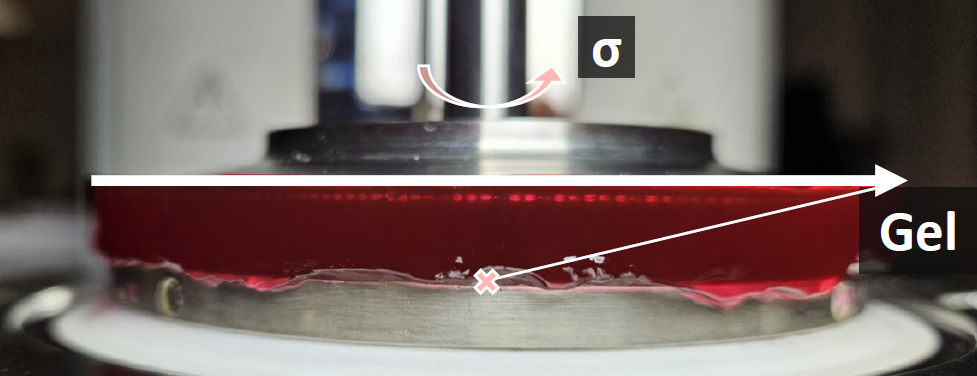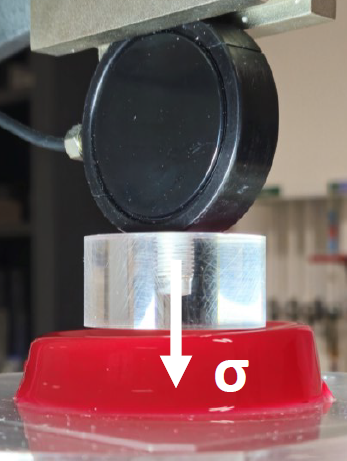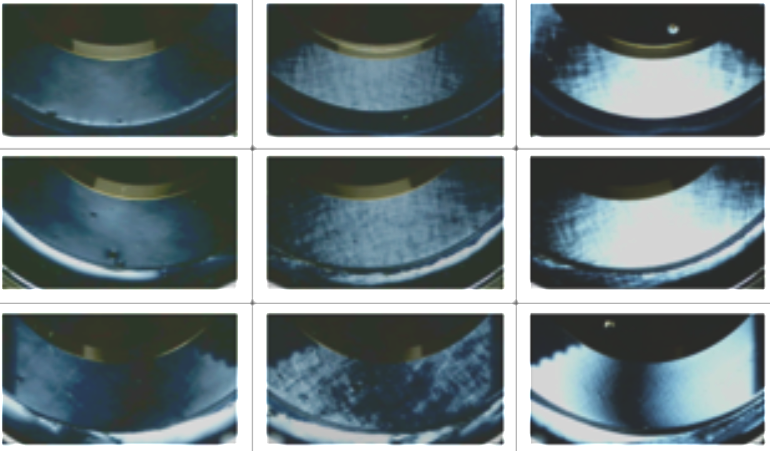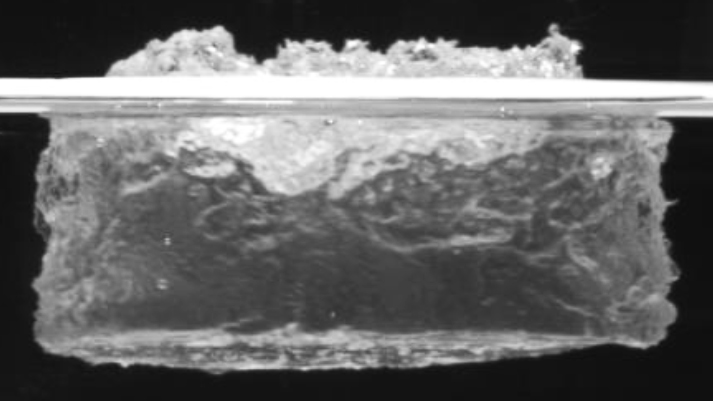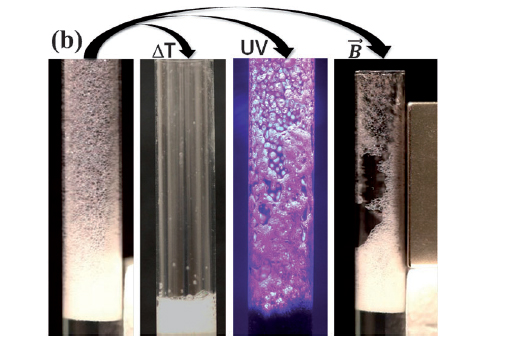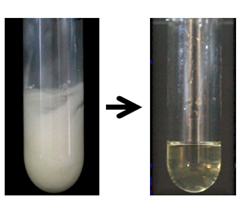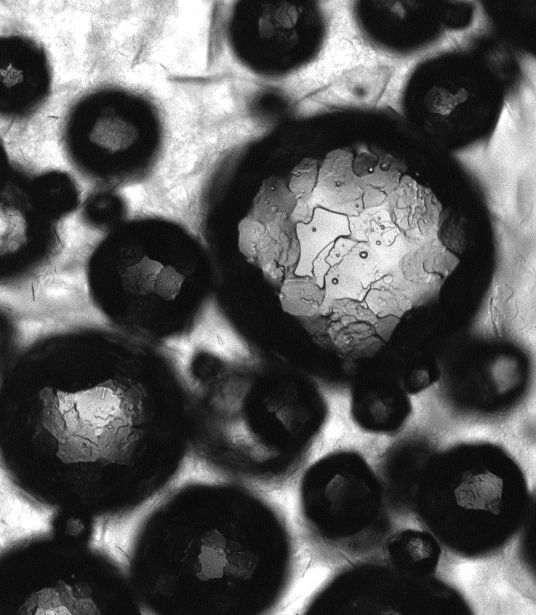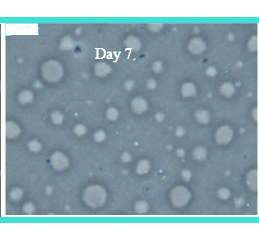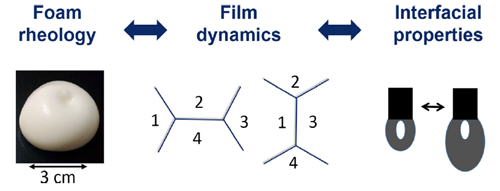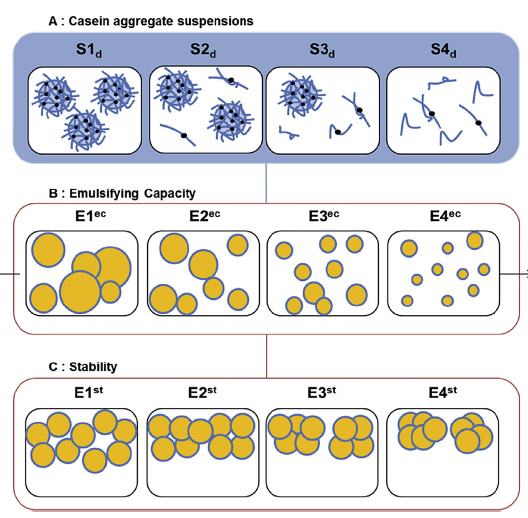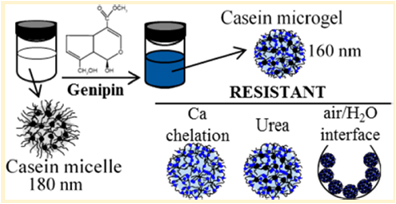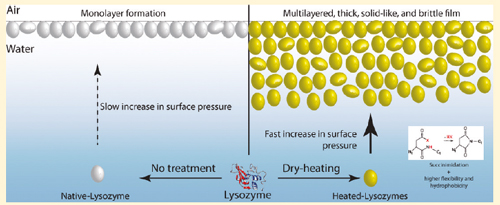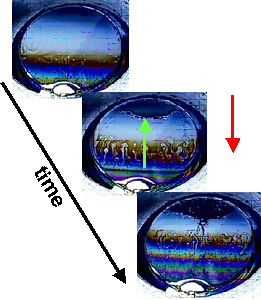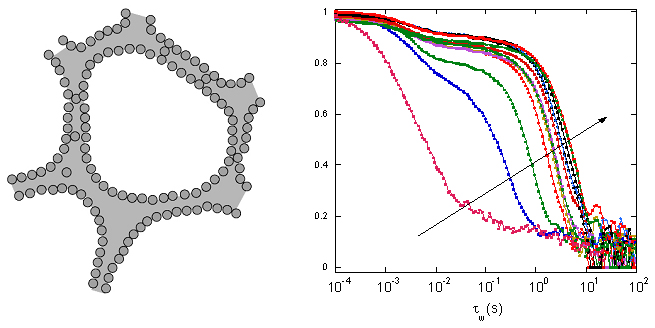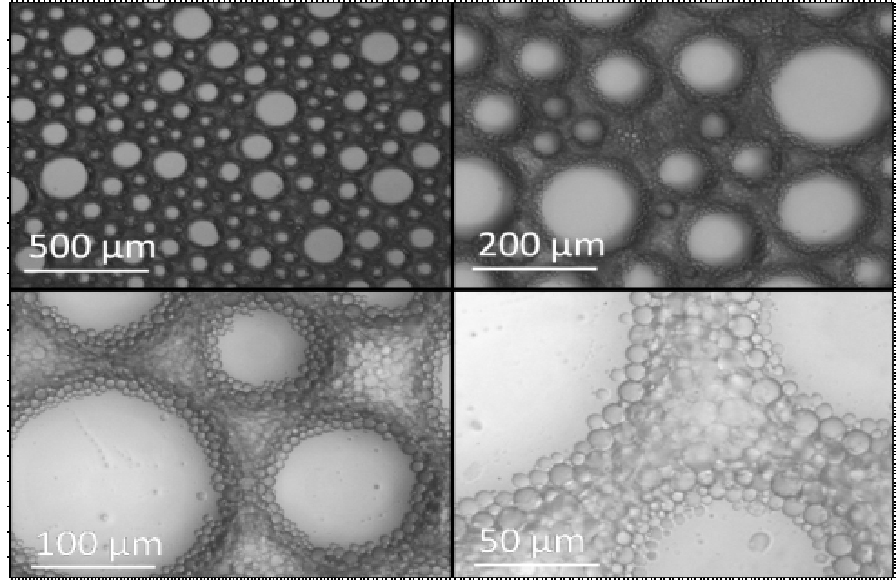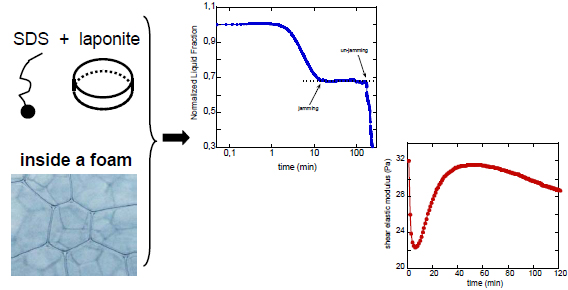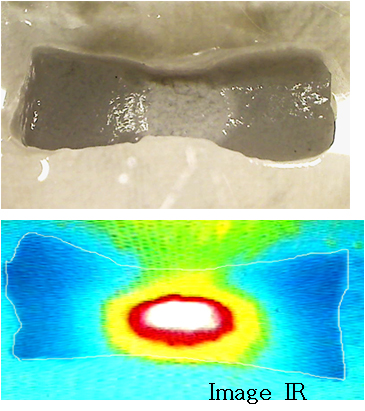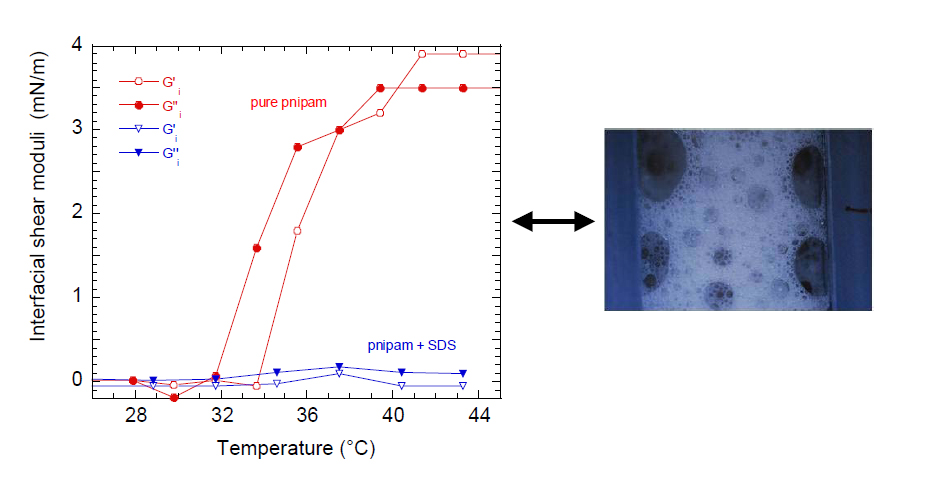context
Here, our goal is to study foams, emulsions and gels made of complex chemical formulation and to investigate the links between the microscopic and macroscopic scales, especially to design new materials with original properties and/or high responsivity to external stimuli.
One-step generation of single-core double emulsions
In collaboration with Jean-Paul Douliez (INRAE Bordeaux). Here, we describe a general and simple one-step method based on hydrophilic polymers dispersed in polar oils to generate osmose-induced diffusion of water into oil droplets, forming polymer-rich aqueous droplets inside the oil droplets.
foams and emulsions based on soybean co-products
In collaboration with F. Gauffre (ISCR), L. Paquin (ISCR) and V. Vié (IPR).
gelled waters : sensory perception and rheology
In collaboration with F. Gauffre (ISCR), L. Paquin (ISCR), R.Thibault (CHU Rennes) and V. Vié (IPR). Many diseases can lead to swallowing disorders (dysphagia) and trigger health consequences. In order to prevent the risk of penetration-aspiration, thickened fluids and gels are one of the possible options for providing water. However, the texture of these gels can still be optimized for patients, both from a sensory and/or nutritional point of view. Our aim is to characterize the structure and rheological properties of these gels in order to understand and predict sensory perception and thus to drive further formulation developments.
DNA solutions under flow
In collaboration with M. Bravo Anaya (ISCR) and Universidad de Guadalajara (Mexico). We study the effect of DNA molecular weight on supramolecular organization of DNA solutions under flow.
Elastic - but dilute ! - emulsions
In collaboration with Anne-Laure Fameau (INRAE Lille), Fabrice Cousin (LLB) and Jean-Paul Douliez (INRAE Bordeaux).
sugar-based organogels
Under the supervision of Loic Lemiègre and Fabienne Berrée (ENSCR and ISCR Rennes).
Responsive Aqueous Foams: a review
In collaboration with Anne-Laure Fameau (INRA Nantes), and Adrian Carl and Regine Von Klitzing (TU Berlin).
Anne-Laure Fameau, Adrian Carl, Arnaud Saint-Jalmes and Regine von Klitzing, ChemPhysChem 16, 66 – 75 (2015).
Responsive Foams with Adjustable Thresholds of Destabilization
In collaboration with Anne-Laure Fameau (INRA Nantes)
how can one change from an "almost eternal" foam to a 'highly unstable' one ? just tune the temperature ...but only if you have the good chemical formulation for that !
Here is our first paper : « Smart Foams: Switching Reversibly between Ultrastable and Unstable Foams »
Anne-Laure Fameau, Arnaud Saint-Jalmes, Fabrice Cousin, Bérénice Houinsou Houssou, Bruno Novales, Laurence Navailles, Janine Emile, Frédéric Nallet, Cédric Gaillard, François Boué, Jean-Paul Douliez.
Angewandte Chemie, Int. Ed. Volume 123, Issue 36, pages 8414–8419, August 29, 2011
And go to this page to find articles in the press about this work.
Find here our second article on this topic : "Morphological Transition in Fatty Acid Self-Assemblies: A Process Driven by the Interplay between the Chain-Melting and Surface-Melting Process of the Hydrogen Bonds" A.-L. Fameau, F. Cousin, A. Saint-Jalmes. Langmuir, 33 (45), 12943 (2017).
And a third article: "Design of Responsive Foams with an Adjustable Temperature Threshold of Destabilization" A.L. Fameau, F. Cousin, R. Derrien and A. Saint-Jalmes
Soft Matter, 14, 2578 (2018).
Smart Non-Aqueous Foams from Oleogel Based on Lipids
In collaboration with Anne-Laure Fameau (INRA Rennes) and O. Velev (Norht Caroline State Univ.).
we introduced a novel approach to produce oil foams made from an oleogel based on fatty alcohol platelets dispersed in sunflower oil. The produced foams are stable for months, while the collapse of the foams could be induced quickly upon heating due to the melting of the crystal particles surrounding the bubbles.
Langmuir, 31, 13501-13510 (2015).
We also wrote a review on this topic : "Non-aqueous foams: Current understanding on the formation and stability mechanisms" A.-L. Fameau, A. Saint-Jalmes.
Advances in Colloid and Interface Science, 247, 454 (2017).
food and foam : interactions with the STLO lab (INRAE) in Rennes
In collaboration with S. Pezennec, D. Dupont, F. Gaucheron and F. Nau from STLO - and with S. Beaufils and V. Vié at IPR - we studied foams and emulsions stabilized by milk proteins.
“Development of an aqueous two-phase emulsion using hydrophobized whey proteins and erythritol” Ashkan Madadlou, Fanny Guyomarc’h, Juliane Floury, arnaud saint-jalmes, Didier Dupont.
Food Hydrocolloids, 93, 351–360 (2019).
“How foam stability against drainage is affected by conditions of prior whey protein powder storage and dry-heating: a multidimensional experimental approach” Alexia Audebert; Sylvie Beaufils ; Valérie Lechevalier; Cécile Le Floch-Fouéré ; Arnaud Saint-Jalmes; Stéphane Pezennec
Journal of Food Engineering, 242 : 153-162 (2019).
“Interfacial properties, film dynamics and bulk rheology: a multi-scale approach on dairy protein foams” Alexia Audebert, Arnaud Saint-Jalmes, Sylvie Beaufils , Cécile Le Floch-Fouéré, Simon Cox , Stéphane Pezennec.
Journal of Colloid and Interface Science 542, 222–232 (2019).
"Gradual disaggregation of the casein micelle improves its emulsifying capacities and decrease the stability of dairy emulsions" Fanny Lazzaro, Arnaud Saint-Jalmes, Frédéric Violleau, Christelle Lopez, Mireille Gaucher-Delmas, Marie-Noëlle Madec, Eric Beaucher, F. Gaucheron.
Food Hydrocolloids, 63, 189e200 (2017).
Also, by adding Genipin to solutions of casein micelles, we were able to create a new colloidal object, and studied its resistance to destabilizing effects.
Naaman F. Nogueira Silva, Arnaud Saint-Jalmes, Antonio F. de Carvalho and Frederic Gaucheron, Langmuir, 30, 10167-10175 (2014).
Finally, it's amazing how an interface can enhance and reveal tiny tiny biochemical modifications.
“Strong improvement of interfacial properties can result from slight structural modifications of proteins: the case of native and dry-heated lysozyme”
Yann Desfougères, Arnaud Saint-Jalmes, Anniina Salonen, Véronique Vié, Sylvie Beaufils, Stéphane Pezennec, Bernard Desbat, Valérie Lechevalier, and Françoise Nau.
inversing drainage in foams and thin-films using light
In collaboration with E. Chevallier, F. Lequeux and C. Monteux, ESPCI, Paris ; and I. Cantat, Rennes.
Using photoresponsive surfactants, we are able to trigger flows, by a UV illumination, opposing the usual gravitational drainage: in a vertical thin liquid film, the fluid can refill the film (green arrow) once under UV. Similar light-induced pumping effects occur alo in 3D foams, at the scale of the liquid channels (Plateau borders).
Soft Matter, DOI: 10.1039/c3sm50258a (2013)
Oligomeric Surfactant : Tuning Foam Stability by the Surfactant Structure
In collaboration with Martin In at LCVN Montpellier
We investigated the foaming of solutions made of a family of well-controlled molecules : monomer of cationic surfactants, then dimers, trimers and tetramers. The spacer between the head group is also variable between two values (3 or 6 carbons)
“Solutions of Surfactant Oligomers: A Model System for Tuning Foam Stability by the Surfactant Structure » A. Salonen, M. In, J. Emile, A. Saint-Jalmes Soft Matter, 6, 2271(2010)
internal dynamics of particle-stabilized foams
In collaboration with D. Langevin's group in Orsay
In collaboration with Jerome Crassous at IPR
A previous study - published in Soft matter in 2008 (see the "papers" section) dealt with the outstanding stability of these foams, containing no surfactants, but solely stabilized by silica nanoparticles.
Recently, we investiugated the internal dynamics of these particle-stabilized foams. We showed that two modes co-exist, one linked to the motion of the free particles inside the netweork of liquid channels, and another one linked to the foam structure evolution....
"Two-Modes Dynamics in Dispersed Systems : the Case of Particle-Stabilized foams Studied by Diffusing Wave Spectroscopy." A. Stocco, J. Crassous, A. Salonen., A. Saint-Jalmes, D. Langevin. Physical Chemistry Chemical Physics (2010).
Here comes a second paper on these issues : “probing the dynamics of particles in an aging dispersion with diffusing wave spectroscopy” J. Crassous, A. Saint-Jalmes, Soft Matter, 8, 3683 (2012).
dual gas and oil dispersion in water : production and stability of foamulsion
In collaboration with Aniinna Salonen and LPS Orsay
what do you get when foaming an emulsion ? bubbles and droplets have to co-exist, and possibly make "foamulsions". And it can go from rapidly collapsing foamulsions to ultra-stable ones.
“ foaming emulsion” A. Salonen, W. Drenckhan, E. Rio, A.Saint-Jalmes, D. Langevin, Proceedings du Congrès Mondial de l'Emulsion, Lyon, Vol.3, (2010)
“ dual gas and oil dispersion in water : production and stability of foamulsion” A. Salonen, R. Lhermerout, E. Rio, D. Langevin, A.Saint-Jalmes, Soft Matter (2011)
laponite-doped foams
what's going on when the foaming fluid itself has its own time-dependent rheology ? or : a glass inside a glass...
“Surfactant Foams Doped with Laponite : Unusual Behaviors Induced by Aging and Confinement” R.M. Guillermic, A. Salonen, J. Emile, A. Saint-Jalmes Soft Matter, DOI: 10.1039/b914923f (2009).
actuation of soft gels (or "living sushis")
In collaboration with G. Maurdev (CSIRO, Australia), and F. Gauffre (ISCR).
large and reversible deformations of soft thermoresponsive gels (based on Poly-nipam) can be induced by temperature-induced local swelling or shrinking.
Some people suggested that these bending gels look like "living sushis". Want some :) ?
poly-nipam polymers et interfaces and in foams
we recently investigated the interfacial dynamics of interfaces where a thermoresponsive polymer (Poly-NIPAM) is adsorbed. It turns out that the whole viscoelasticity - both in shear and in compression - can be widely tuned by the temperature, within a short range of degrees. Associating these interfaces, can we get responsive foams ? and what is the impact of the addition of a surfactant ? These are some of the issues we have investigated.
“Dynamics of poly-nipam chains in competition with surfactants at liquid interfaces: from thermoresponsive interfacial rheology to foams”, R.M. Guillermic, A. Saint-Jalmes, Soft Matter, 2013, 9, 1344.
back to :


